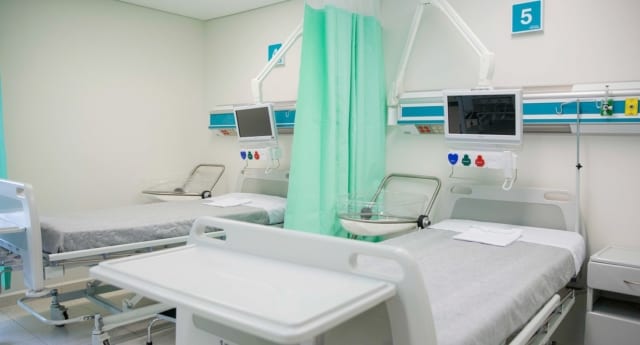
STEVE WALSH, the president and CEO of the Massachusetts Health & Hospital Association, struck a nerve with his recent commentary suggesting the state’s hospital industry is teetering on the brink of financial disaster.
In his piece, Walsh noted the Center for Health Information and Analysis recently reported that Massachusetts hospitals had a median negative margin of 0.9 percent for the quarter ending June 30. He also pointed to the continuing challenges of high labor costs, the inability of hospitals to move patients who no longer need the highest level of care into post-acute care facilities because of a shortage of staffed beds, and slow insurance approvals for care at a nursing home or rehab facility.
He also noted that even though we are the state with the highest level of health insurance coverage for its residents, we are also facing a growing deficit in the Health Safety Net fund, which means hospitals are providing care without a source of reimbursement for that care.
I can quibble with Walsh a bit about how median or average numbers can often hide the full reality of what is happening at some of our hospitals. For sure, the financially hemorrhaging Steward hospitals that entered bankruptcy protection during that quarter helped to bring down the overall median to -0.9 percent.
And while 57 percent of all hospitals in the state lost money on operations, the data reveal that when looking at total margin, 35 out of 58 hospitals were actually in the black. Behemoth Massachusetts General Hospital had a positive operating margin of 6.6 percent and its sister academic medical center, Brigham and Women’s, posted a 5 percent margin. Each had a total margin of around 10 percent. That performance helped fuel their system to grow its net assets by over $1.6 billion for the quarter, bringing its net asset total to $19.1 billion.
For sure, not all of the state’s hospitals are sinking financially, but I do agree with Walsh that some are threatened and have been struggling for quite awhile. That group would include not only those who have historically received supplemental monies from the Legislature for being financially distressed hospitals, but in more recent years, a number of others, including systems as large as Tufts Medicine, are now under growing financial pressure to get to break even.
And our hospitals are not alone in New England. If you look at operating margins over many years, hospitals in our region of the country financially perform worse than the country overall. Right now, Vermont hospitals may be in the overall worst situation.
Interpreting recent data, it would be helpful to understand what role a high inflationary period has played in our Massachusetts hospital losses due to labor, goods, and services costing much more than anticipated. Interest rates were also higher during this time, which impacted borrowing costs. As we come out of this inflationary period, will hospitals also see improvements in their operating performance?
It seems there is already enough money in the system. So why are hospitals in our state and in the region struggling more to get to break even on average than the rest of the nation? It’s a bit of a puzzle.
Is it because underlying wage rates or staffing levels are much higher in this part of the country? Are there too many administrators and are they overpaid? Are there too many bottlenecks here to moving patients through the system because of a lack of post-acute beds or other bureaucratic roadblocks? Are hospitals operating as efficiently as they could?
Getting answers to these questions may help to better understand what is really causing some of our hospitals to be so financially challenged. And those answers may help us utilize payment mechanisms to redistribute future money flows to get resources into the hands of providers who will best support societal access, quality, and affordability needs.
As Walsh says at the end of his commentary, “hospitals and their caregivers merely want their mounting challenges to be understood.”
They are not alone in that desire; we all want to understand what is really going on, both on the revenue and expense side of hospital operations in our state. Perhaps at this week’s Health Policy Commission cost trends hearings, there can be an initial dive into some of these questions as meaningful transparency is the first step to evaluating hospital finances.
Paul A Hattis is a senior fellow at the Lown Institute.
The post Not all Mass. hospitals are in terrible financial shape appeared first on CommonWealth Beacon.

